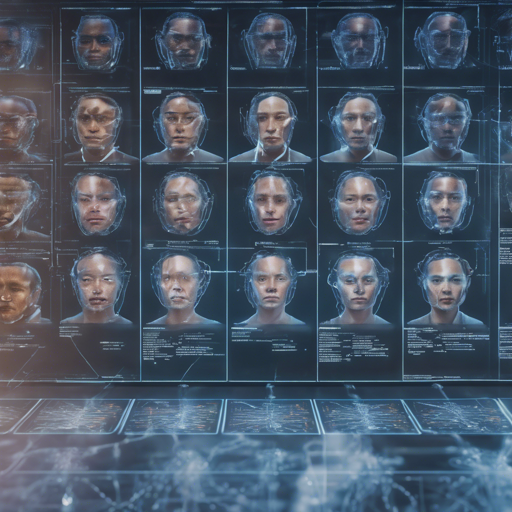Generative Adversarial Networks (GANs) have gained immense popularity within the field of artificial intelligence, especially for tasks involving image generation. This blog will delve into the specifics of a model using Deep Convolutional GAN (DCGAN) techniques, designed to create fake faces using the CelebA dataset.
Model Description
The DCGAN model consists of two neural networks: a generator and a discriminator. The generator creates synthetic images, while the discriminator evaluates them against real images, providing feedback to the generator. This adversarial process enables the model to refine its outputs, resulting in realistic image generation. Primarily, this model is used for generating new image data, particularly faces that can be indistinguishable from real photographs.
Intended Uses
- Generating synthetic images for training datasets.
- Enhancing image-based applications in art and design.
- Researching unsupervised learning techniques.
Limitations
While DCGANs exhibit impressive capabilities, they are not without limitations. For instance:
- Bias in training data can lead to stereotypical or undesirable outputs.
- High-resolution image generation remains challenging.
Possible solutions to these limitations include curating unbiased datasets and employing advanced techniques like transfer learning.
How to Use
Here’s a simple guide to get started with the DCGAN model:
python
import torch
from torchvision import datasets, transforms
from torch.utils.data import DataLoader
# Data loading
transform = transforms.Compose([
transforms.Resize((64, 64)),
transforms.ToTensor(),
])
dataset = datasets.CelebA(root='path/to/data', split='train', download=True, transform=transform)
data_loader = DataLoader(dataset, batch_size=128, shuffle=True)
Limitations and Bias
There are inherent biases that may arise from using datasets such as CelebA. For example, if the dataset contains images mostly of individuals belonging to certain demographics, the model might learn to reproduce these biases. To alleviate this, employing a diverse training dataset and implementing fairness algorithms can help minimize these issues.
Training Data
The model utilized the CelebA dataset, renowned for its large size and variety of celebrity images. It includes over 200,000 images annotated with facial attributes, serving as a robust foundation for training deep learning models. If you initialized it with pre-trained weights, here’s a link to the pre-trained model card: **[Pre-trained DCGAN Model](https://github.com/someone/dcgan-pretrained)**.
Training Procedure
The DCGAN was trained utilizing NVIDIA GPUs, with hyperparameter settings optimized as follows:
- Learning rate: 0.0002
- Batch size: 128
- Number of epochs: 50
Data preprocessing steps included resizing images to a uniform dimension and normalizing pixel values.
Evaluation Results
The performance of the model is reflected in the following loss metrics :
- Generator loss: 22.7
- Discriminator loss: 7.9
Generated Images
Below are some exemplary images generated by the DCGAN model:

Bibliography Entry and Citation Info
@inproceedings{gan2020,
title={Fake Faces with DCGANs},
year={2020}
}
Troubleshooting
If you encounter errors while implementing the DCGAN, consider the following troubleshooting steps:
- Ensure that all necessary libraries (like PyTorch and torchvision) are properly installed.
- Check for mismatched dataset paths or structures.
- Monitor GPU usage and memory to avoid out-of-memory errors.
For more insights, updates, or to collaborate on AI development projects, stay connected with **[fxis.ai](https://fxis.ai)**.
At **[fxis.ai](https://fxis.ai)**, we believe that such advancements are crucial for the future of AI, as they enable more comprehensive and effective solutions. Our team is continually exploring new methodologies to push the envelope in artificial intelligence, ensuring that our clients benefit from the latest technological innovations.

